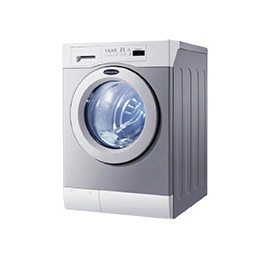Understanding MHEC Powder Its Properties and Applications
MHEC, or Methyl Hydroxyethyl Cellulose, is a non-ionic cellulose ether that has garnered significant attention in various industries due to its versatile properties and applications. This versatile powder is derived from natural cellulose, which undergoes a modification process involving the methylation and hydroxyethylation of cellulose, resulting in a white, free-flowing powder that is soluble in water and has a variety of unique properties.
Properties of MHEC Powder
One of the most significant properties of MHEC powder is its water solubility. When mixed with water, it forms a viscous gel that can be easily manipulated for various applications. The powder itself is odorless and tasteless, making it suitable for use in food products and pharmaceuticals. MHEC possesses excellent thickening, binding, and film-forming abilities, which enhance the texture and consistency of formulations. Moreover, it is resistant to extreme pH levels and can maintain its effectiveness in both acidic and alkaline conditions, a key advantage for many industrial processes.
Another notable characteristic of MHEC is its ability to improve the rheological properties of materials. It can effectively modify the flow behavior of liquids, aiding in the stabilization and suspension of solid particles. This property is particularly beneficial in construction materials, where MHEC enhances the workability and adhesion of cement, mortar, and plaster, resulting in improved performance during application.
Applications of MHEC Powder
mhec powder

The applications of MHEC powder span across multiple industries, including construction, food, pharmaceuticals, and cosmetics. In the construction industry, MHEC is commonly used as a thickening agent in cement-based products and tile adhesives. Its unique ability to retain water improves the workability of these materials and extends their open time, facilitating easier handling during application. Additionally, MHEC enhances the adhesion of the mixture, ensuring that materials bond effectively.
In the food industry, MHEC serves as a stabilizer and thickening agent in various products such as sauces, gravies, and dressings. Its ability to improve texture while providing consistency makes it a valuable ingredient in many culinary applications. Furthermore, since MHEC is derived from natural cellulose, it is considered safe for consumption, which adds to its appeal in food formulations.
The pharmaceutical industry also benefits from MHEC's properties. It is commonly used in the formulation of controlled-release medications and as a binder in tablet formulations. Its gel-forming capabilities allow for a gradual release of active ingredients, which enhances the efficacy of drugs over time. Additionally, MHEC finds uses in topical formulations, where it aids in the stabilization of emulsions and enhances the product's overall feel.
In cosmetics, MHEC acts as a thickening agent and film former, improving the texture and stability of lotions, creams, and gels. Its ability to provide an elegant feel upon application, combined with its skin-conditioning properties, makes it a popular choice in personal care products.
Conclusion
In summary, MHEC powder is a multifunctional ingredient that plays a vital role across a diverse range of industries. Its unique properties, such as water solubility, thickening capability, and stability under varying pH conditions, make it an indispensable component in modern formulations. As industries continue to innovate and demand high-performance materials, the relevance of MHEC powder is set to grow, solidifying its position as a key ingredient in the development of advanced products. With its origins in natural cellulose, MHEC stands out as a sustainable choice in the global market, ensuring that it meets the evolving needs of consumers and manufacturers alike.
-
Rdp Powder: Key Considerations for Wholesalers in the Building Materials IndustryNewsJul.08,2025
-
Key Considerations for Wholesalers: Navigating the World of Hpmc - Based ProductsNewsJul.08,2025
-
Hpmc Detergent: Key Considerations for WholesalersNewsJul.08,2025
-
Key Considerations for Wholesalers: China Hpmc For Tile Adhesive, Coating Additives, Concrete Additives, and MoreNewsJul.08,2025
-
Crucial Considerations for Wholesalers: Navigating the World of Construction MaterialsNewsJul.08,2025
-
Key Considerations for Wholesalers Sourcing Additive For Cement, Additive For Concrete, Additive For Putty from Additive Manufacturer Shijiazhuang Gaocheng District Yongfeng Cellulose Co., Ltd.NewsJul.08,2025




